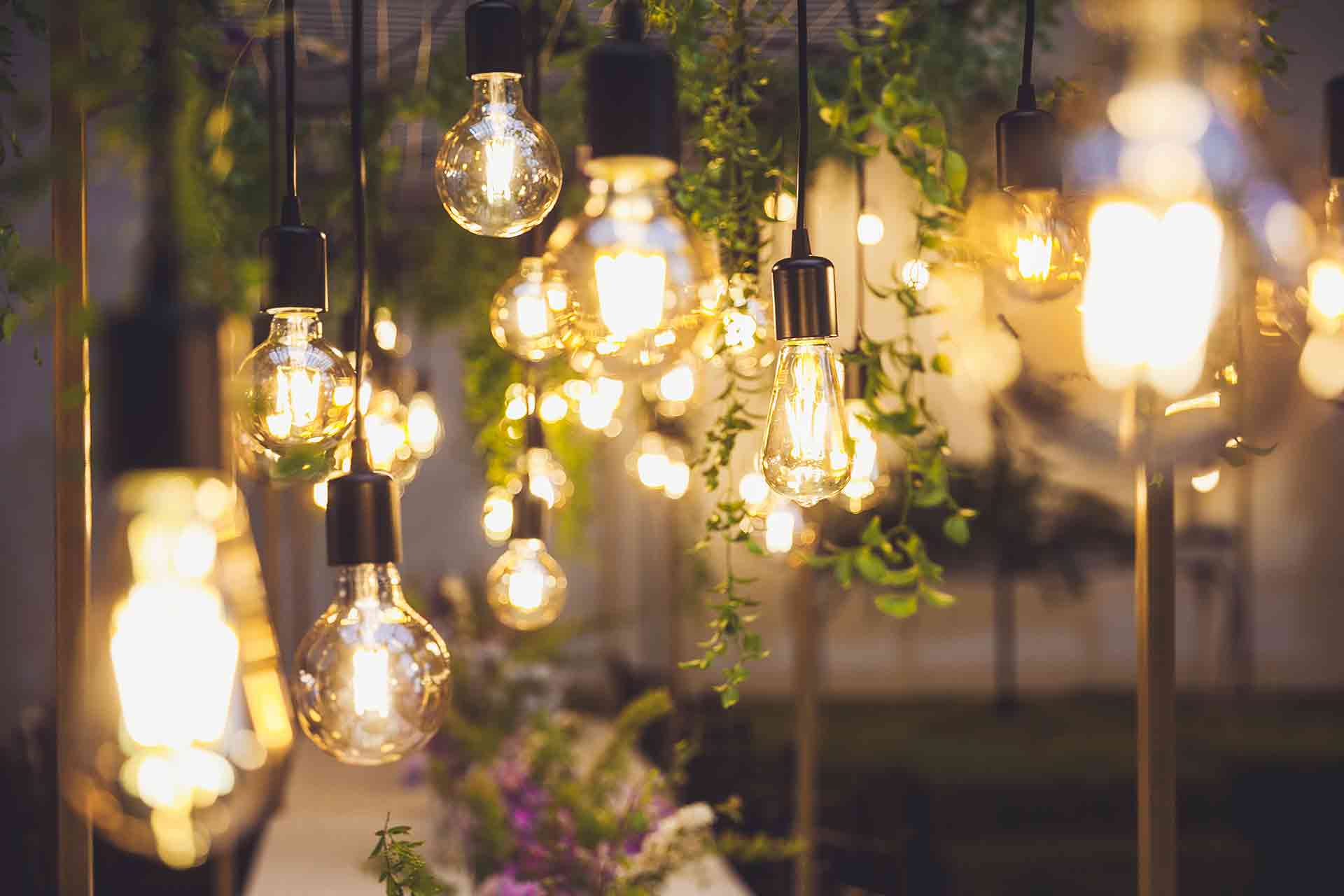Blog>Expert Advice>Buying guide: Helping you to choose your garden lighting
Last updated: 24 September 2024
Buying guide: Helping you to choose your garden lighting
Struggling to choose the best garden lighting for your outside space? Let's walk through all you need to know in choosing the right lighting for your garden in this buying guide.
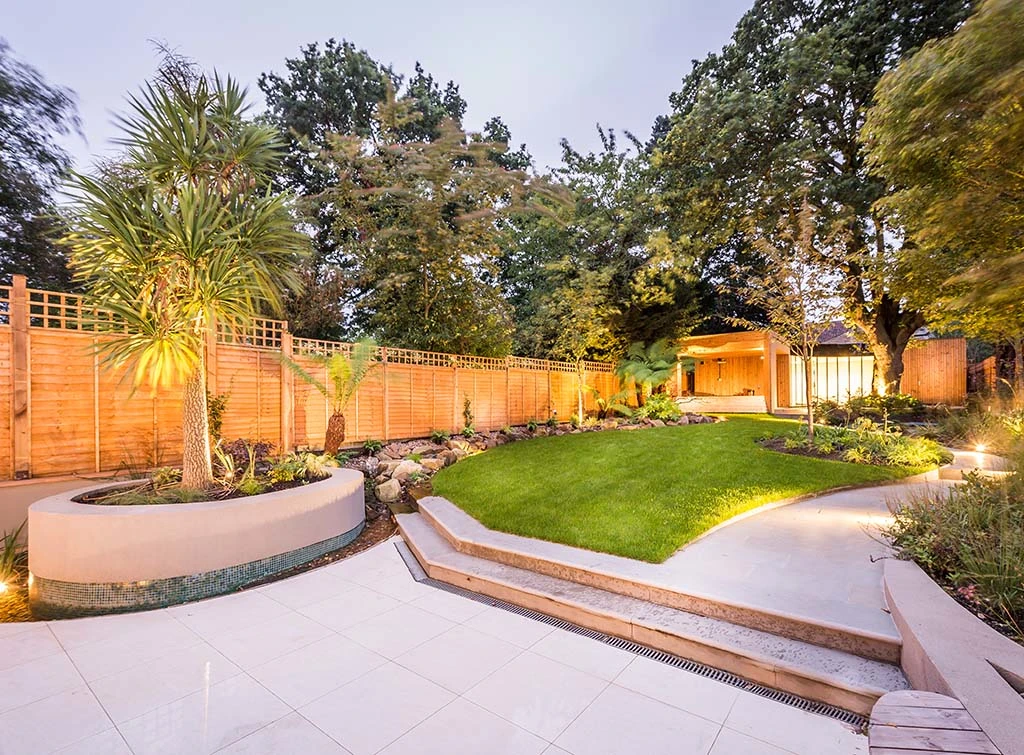
Whether you're researching garden lighting as part of a garden landscaping project, or simply want to illuminate your outdoor space for added ambience and extra security, we've got you covered.
Our garden lighting buying guide explains the different types of exterior lighting, including the purpose and benefits of each.
We also include what to look for when buying garden lighting, from style and design to wattage, lumens, and IP ratings. This is all made simple in one handy guide.
The importance of garden lighting
Generally, garden lighting plays three key roles across your outside space: ambience, safety, and security.
1. Ambience
Ambient lighting will highlight key design features in your garden and give your outside space a warm, inviting glow, perfect for dining, socialising, and relaxing.
Types of ambient garden lighting: Festoon or string lights around a pergola or decked area, wall or fence lights, lanterns, low-level spotlights, and angled spotlights within garden borders.
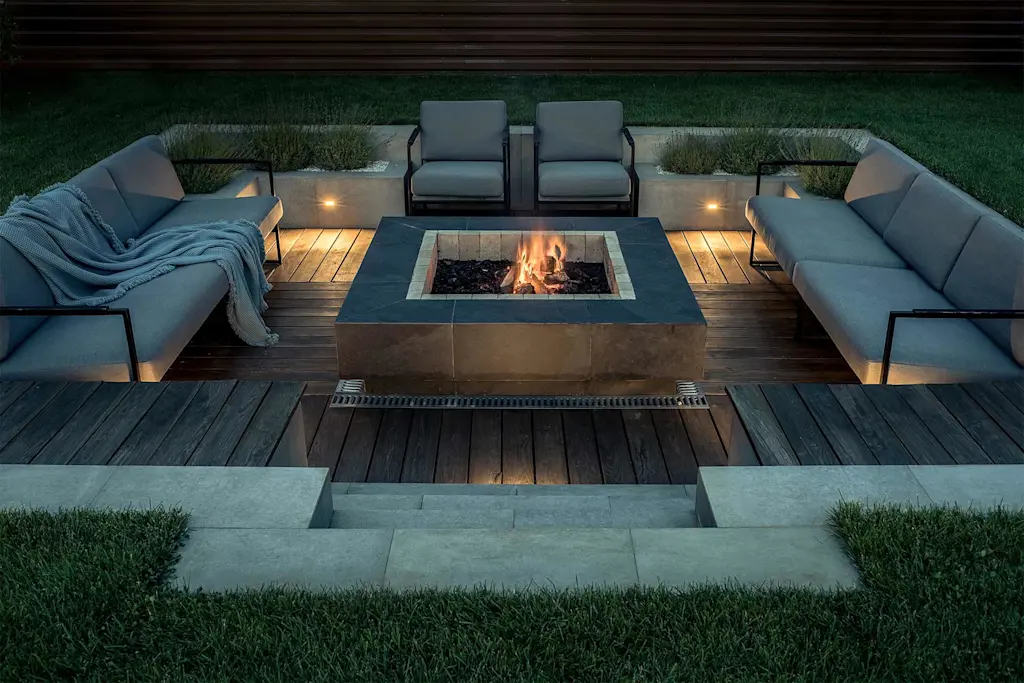
2. Safety
The right outdoor lighting will improve visibility so you can enjoy your garden safely after dark, which is particularly important around uneven walkways and water features.
Types of lighting for increased safety: Illuminated stepping stones and floor-mounted lights embedded along the edge of a path, in the base steps and/or decking, solar stake lights, and pond lights.
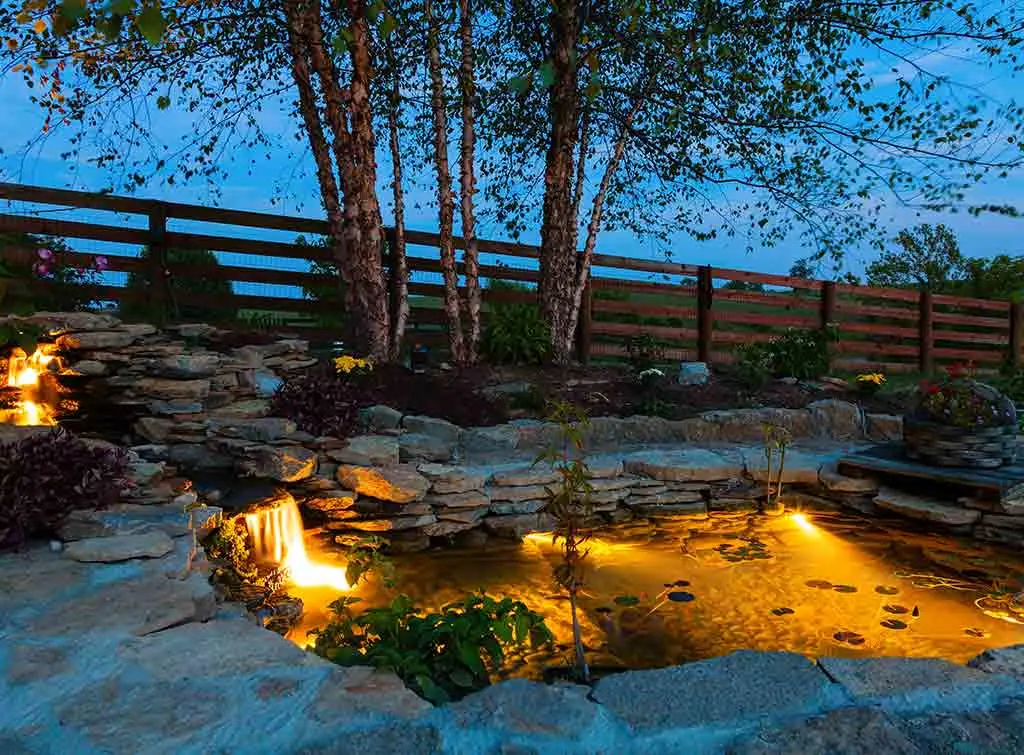
3. Security
Exterior lighting, such as floodlights and wall lights, provide extra security for your home - ideal for deterring intruders.
Types of security lighting: Floodlights, wall lights, and post lights.
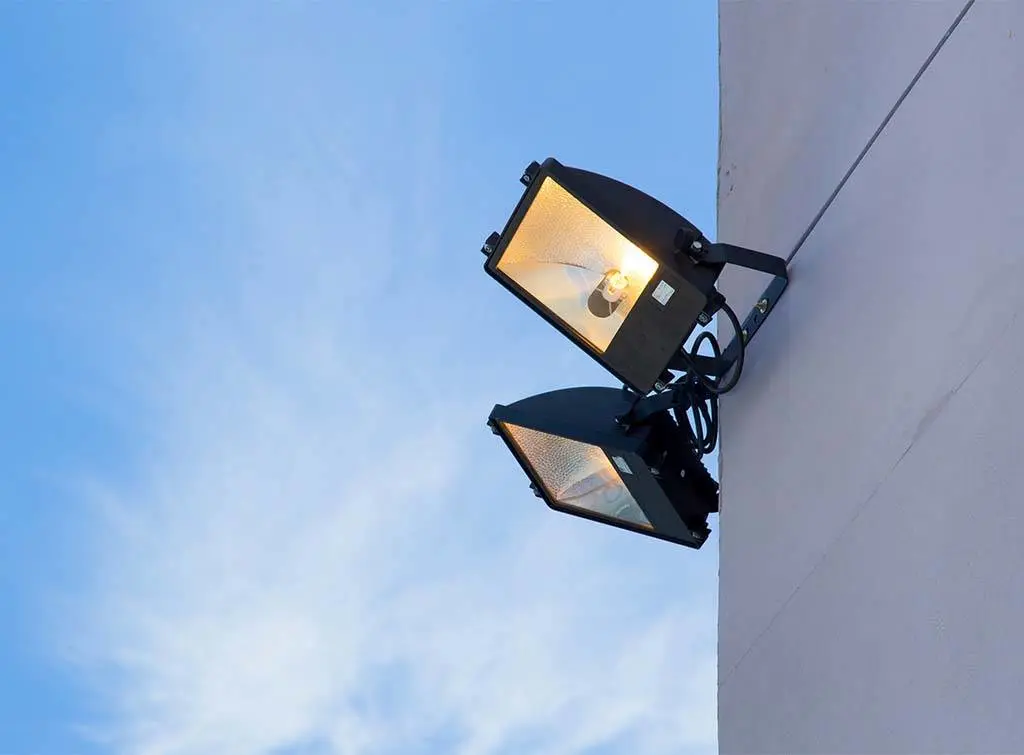
Types of garden lighting and their uses
There are several types of garden lighting to choose from, each with its own uses. You may wish to incorporate a selection across your outside space to suit your individual needs.
1. Floodlights
Best for: Ramping up the security across your driveway, front porch, patio, or the entire garden. Most security lights come with sensors that are triggered by light levels and/or motion detection.
Why choose floodlights: They offer powerful illumination, good coverage, and can be programmed for greater convenience and energy efficiency.
2. Spotlights
Best for: Highlighting garden features such as trees, architectural plants, sculptures, or water features.
Why choose garden spotlights: Adjustable spots allow you to direct the light where needed, adding depth and interest to your outside space.
3. Festoon or string lights
Best for: Creating a cosy, relaxed atmosphere around your outside dining and socialising areas.
Why choose festoon lights: String or festoon lights are easy to put into place, they come in a variety of styles, and add a magical charm.
4. Decking lights
Best for: Adding safety and style to a decked area.
Why choose decking lights: Recessed into the decking means these lights are out of the way during the day but create a big impact at night.
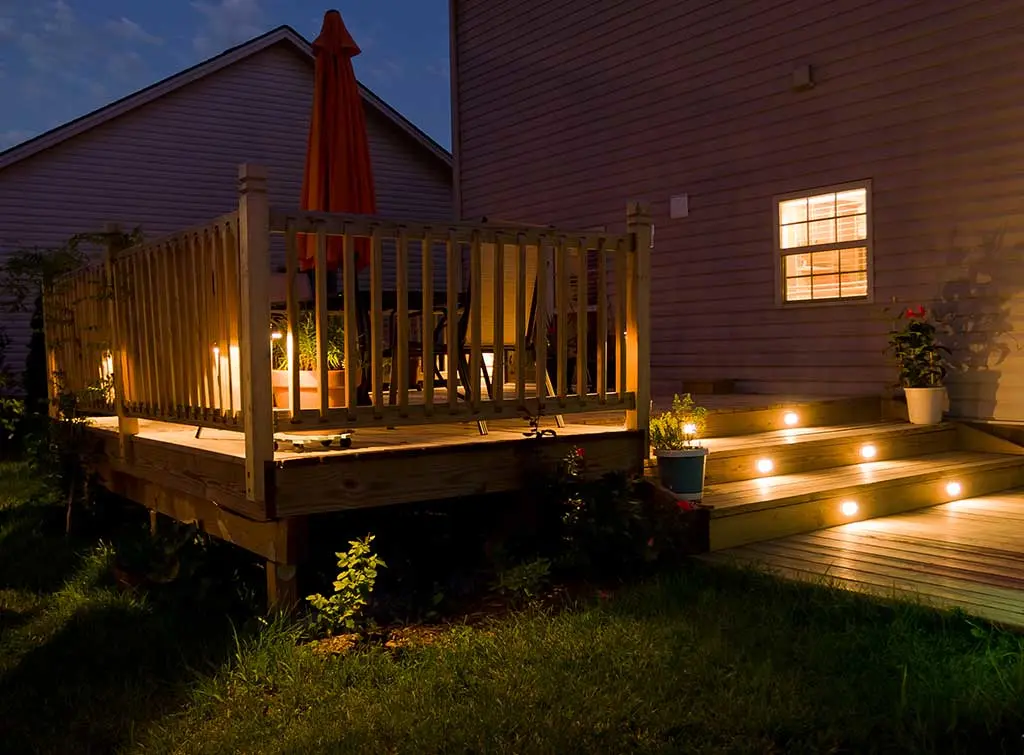
5. Garden wall lights
Best for: Lighting up paths and walkways to provide safe and clear access.
Why choose garden wall lights: A versatile type of garden light that can be used on walls or fences providing both a practical and decorative function.
6. Path lights
Best for: Lighting up paths and walkways for increased safety after dark.
Why choose path lights: Low-level lights are unobtrusive and help to safely guide you around your garden.
7. Pond lights
Best for: Illuminating water features such as ponds and fountains to safely enjoy these garden highlights after dark.
Why choose pond lights: Specifically designed to be submersible and available in a variety of colours to create whatever look you desire.
8. Solar lights
Best for: Creating illumination in your garden without the need for batteries, hard wiring, or a plug.
Why choose solar lights: Powered by sunlight, solar lights are cost-effective, simple to install, and eco-friendly.
12 outdoor lighting ideas to illuminate your garden
Why should you light up your garden? Adding outdoor lighting ideas to your garden will transform your outside space. Not only will it allow you to enjoy your garden beyond daylight hours, but outdoor lighting will also create an inviting atmosphere and increase security. Many homeowners use outdoor
How to choose the best garden lighting for your home
We've looked at the various types of lighting you can choose for your outdoor space. But what are the specifics you should consider before buying garden lighting?
Style and design
Whether you have a traditional or modern home, you'll find exterior lights to suit your property's style and overall garden design.
Available in a range of colours, metals, and finishes - not to mention the hundreds of design options - you'll be spoilt for choice.
Stainless steel, black, and copper are popular for a modern, sleek look
Matt black is great for contemporary gardens
Copper and brass can add warmth and character to a traditional space
Power source
The power source for your garden lighting is a major consideration.
Solar-powered: A renewable energy source and simple and cost-effective to set up, but performance can be affected by the weather
Battery-operated: Wireless and portable, but will require new batteries, which will add up over time
Mains electricity: A reliable and consistent power source, but does require a qualified electrician for installation
Sensors
Sensors are built into some types of garden lights, acting as a trigger for them to turn on and off. This can be particularly useful in wall lights and floodlights.
PIR (Passive Infrared) sensors turn the light on when heat is detected
Photocell sensors turn the light on at dusk and off at dawn
Timers can also be used to set your garden lights to turn on and off at certain times
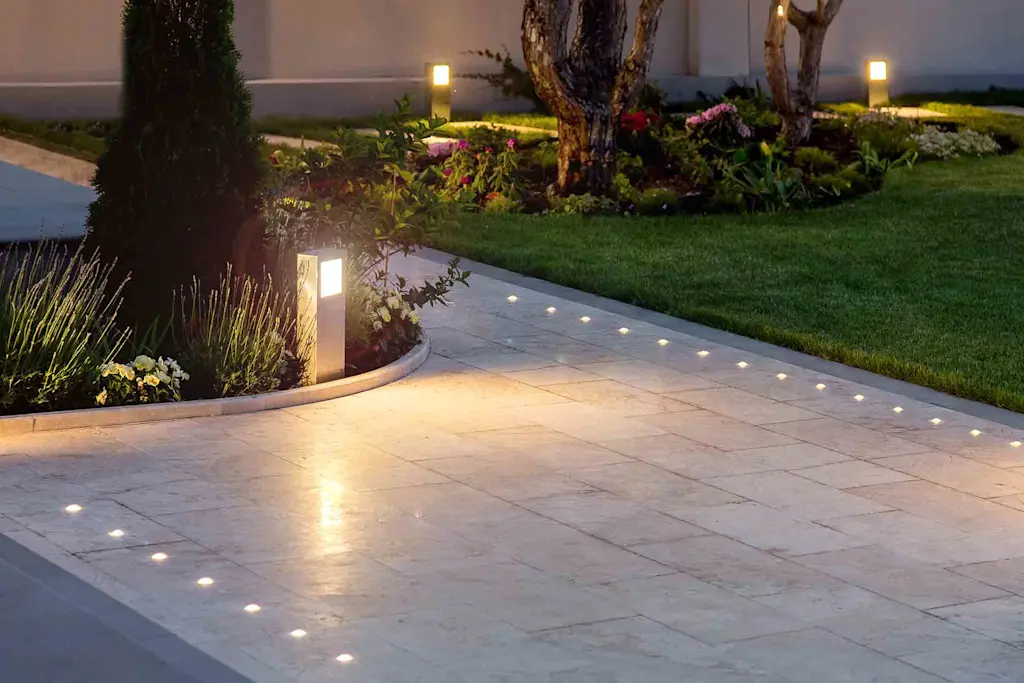
Garden light bulbs
When choosing garden light bulbs, consider bulb colour, wattage, lumens, LEDs, and IP ratings.
Bulb colour
As with your interior lighting, the colour temperature of your bulbs will impact the atmosphere you create.
Colour temperature refers to the different colours that light bulbs produce and is measured in Kelvins.
For most garden lighting, 3,000K or lower is best, unless it's for security lighting.
Warm white (2,700-3,000K): Creates a cosy, golden glow
Cool white (4,000-5,000K): More suitable for functional lighting
Daylight (5,000-6,500K): Often used for security lighting
Wattage
The wattage of a bulb refers to its energy consumption. A higher wattage uses more energy but creates a brighter light. As a guide:
Path lights: 5-15W
Spotlights: 20-35W (LED equivalent of around 4-6W)
Floodlights: 50-100W (LED equivalent of around 10-20W)
Lumens
Brightness is measured in lumens; the higher the figure the brighter the light. Therefore it's likely you'll want different lumens for different purposes.
Step lighting: 12-100 lumens
Spotlights within borders: 50-300 lumens
Path lighting: 100-200 lumens
Deck lighting: 150-300 lumens
Pond lighting: 200-400 lumens
Floodlights: 700-1,300 lumens
LEDs
LEDs are the go-to option in modern homes and gardens. They are energy-efficient, quick to light up, safe, and long-lasting.
They use up to 90% less energy than traditional incandescent bulbs and can last 30% longer, making them a cost-effective option.
IP ratings
All outdoor lighting must have an IP rating. This indicates how well a light fixture resists solid and liquid objects. In the case of garden lighting, you're mainly looking at dust and water. They use the initials 'IP' followed by two numbers.
The first number shows its protection rating against solid objects. The second number indicates water resistance. The higher the number, the more protection, which means you'll have a different rating for pond lights vs. floodlights, for example.
IP44 is ok for lights exposed to light rain
IP65 or higher is the ideal level of protection for outdoor lighting exposed to heavy rain or close to water features
IP68 can be used in a garden pond as underwater lighting
See the tradespeople we've checked and recommend for your job
How much does garden lighting installation cost?
On average, it costs around £165 to install a single low-voltage wall light
Ten LED light clusters plugged into an existing socket along with 65 metres of cable will cost, on average, £400
The cost of garden lighting will vary depending on the scope of the work you need, the type and quality of the fixtures you choose, and the complexity of the installation.
For an accurate quote, contact a qualified local electrician.
Have you considered security lighting for your garage and front entrance?
Installing exterior lighting will not only help you find your front door lock after dark, but it's a great security measure. Here are some average costs to help you consider some of the available options:
The average cost to install a series of soffit lights is £400
The average cost to install an outdoor security light is £150. More powerful 30W versions may cost £175 to install
Request a quote for your lighting project
It's best to hire a qualified electrician for exterior lighting installation. Get direct quotes from our approved members through our request a quote feature.

On Checkatrade, you'll only find trades who meet our high standards and pass up to 12 checks.
Key takeaways
Garden lighting has three main functions: ambience, safety, and security
The average cost to install an external garden light is £165
Choose from a selection of garden lighting types including floodlights and spots, festoon lights, path, and pond lights, depending on your needs
Consider IP ratings, bulb brightness, colour, and your power source when making your selection
LED lights are the preferred option for garden lights being energy-efficient, safe, and long-lasting
Always hire a qualified electrician to install your garden lighting to ensure safe and competent installation
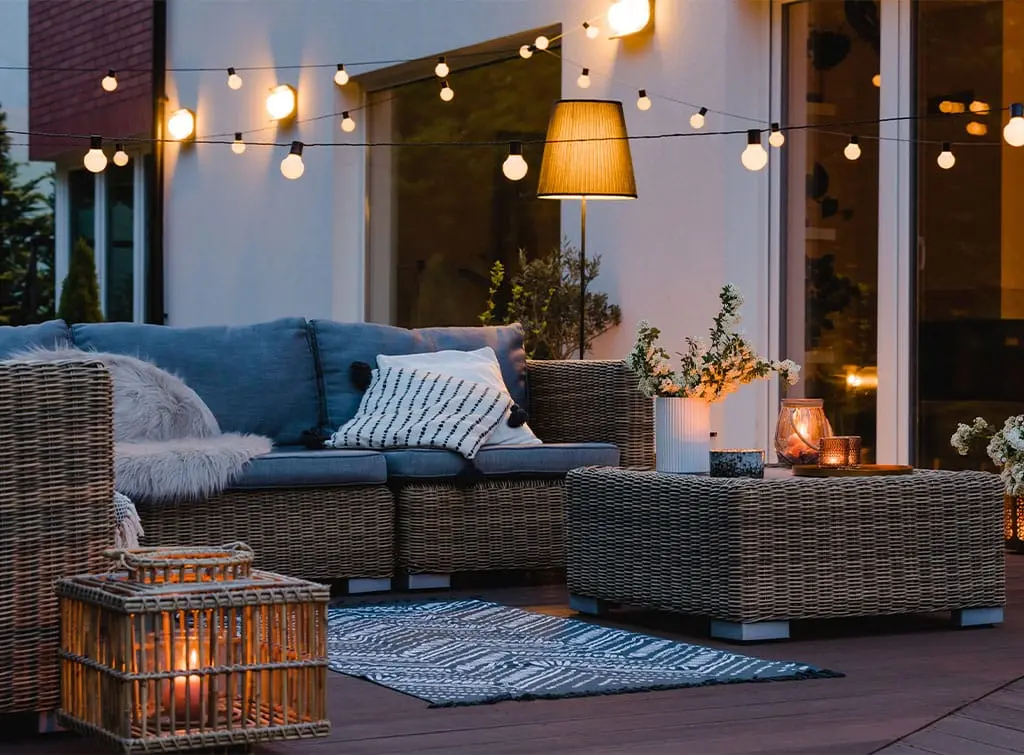
Find a qualified electrician in your area
For a showstopping look to your garden and optimal performance from a safety and security perspective, contact a garden landscaper to help plan your lighting installation.
However, for safe and competent installation of those lights, you'll need a qualified electrician.
To find certified and approved tradespeople in your area, search your postcode, below.
See the tradespeople we've checked and recommend for your job
FAQs
Can I install garden lights myself?
For simple, solar-powered lights, you can install these yourself. However, for any mains-powered lights, you'll need to use a qualified electrician.
How are garden lights powered?
Exterior lighting can be powered in several different ways. Solar-powered lights use the energy from sunlight. Other options include garden lights powered by mains electricity or batteries.
How do I maintain outdoor lighting?
Maintenance of outdoor lighting is minimal. Bulbs or batteries will need changing occasionally. For solar lights, it's important to keep them clean of dirt and debris so they can work effectively.
How many lumens do I need for garden lighting?
Lumens refers to the brightness of the light. For general ambience, 100-300 lumens is sufficient. For security lighting, look for around 700-1,300 lumens.
What IP rating do I need for garden lights?
Outdoor lights should have an IP rating of at least IP44. For areas exposed to heavy rain, IP65 or higher is recommended. For pond lights submerged in water, IP68 is required.
See the tradespeople we've checked and recommend for your job
